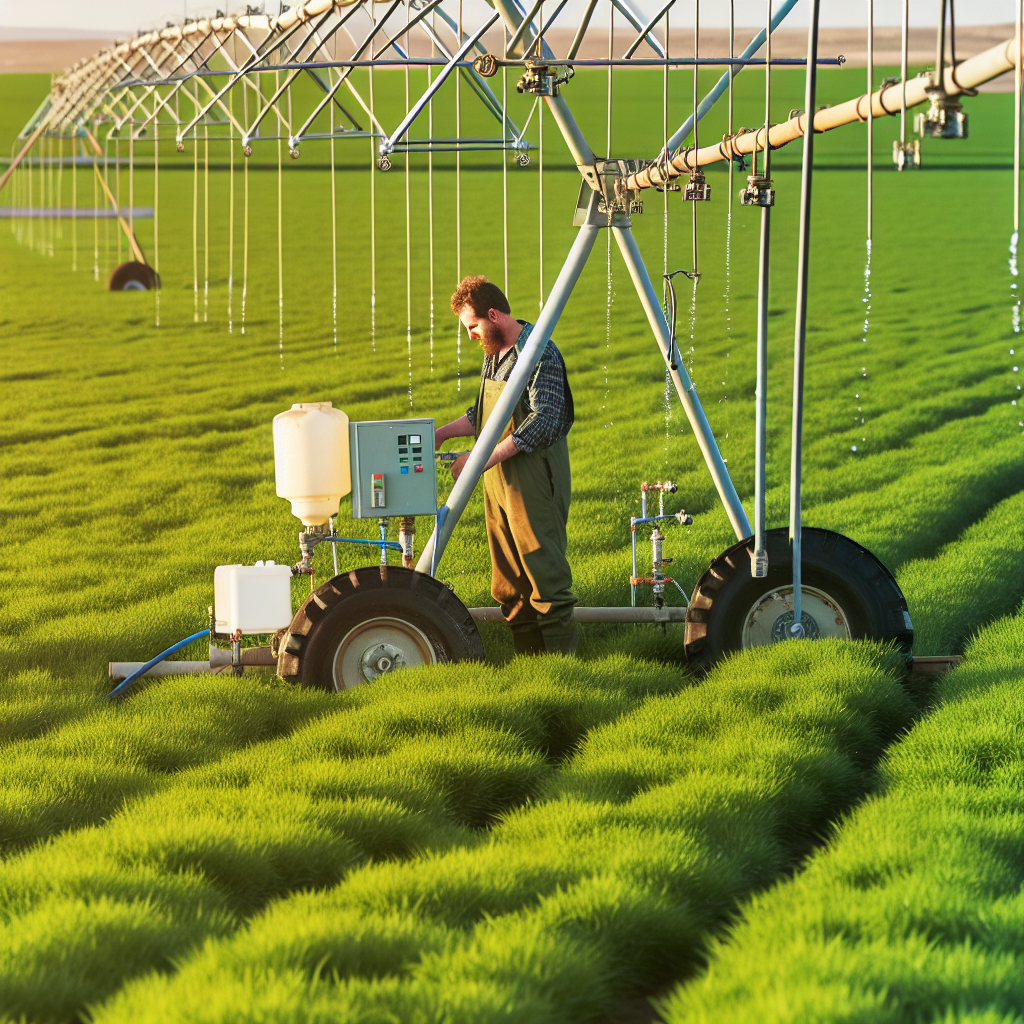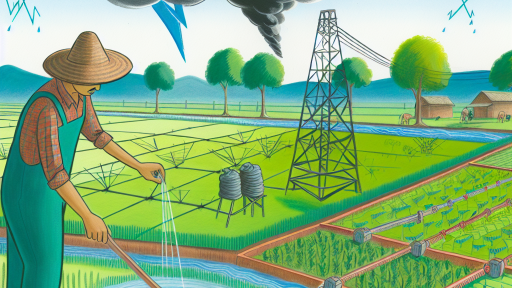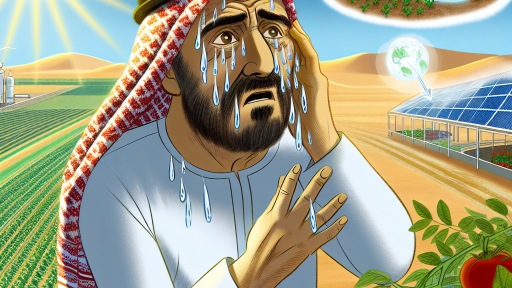Introduction to Climate-Resilient Farming and Water Conservation
Climate change significantly impacts agricultural practices worldwide.
Farmers need to adopt strategies that enhance sustainability.
One key area of focus is water conservation.
Implementing climate-resilient farming practices helps save water.
Understanding Climate-Resilient Farming
Climate-resilient farming responds to environmental challenges effectively.
It includes techniques that adapt to changing climate conditions.
Consequently, these practices improve crop yields despite adverse weather.
Farmers can also mitigate the effects of droughts and floods.
The Importance of Water Conservation
Water is a critical resource for agriculture.
Its scarcity threatens food security globally.
Therefore, conserving water should be a priority for farmers.
Effective water management leads to sustainable farming systems.
Key Water-Saving Techniques
Various methods enhance water conservation on farms.
- Drip irrigation delivers water directly to plant roots.
- Rainwater harvesting captures and stores rainfall for future use.
- Soil moisture management helps retain water in the ground.
- Cover cropping improves soil structure and reduces evaporation.
The Role of Innovative Technologies
Technology plays a vital role in modern agriculture.
It offers tools to monitor and manage water use efficiently.
Transform Your Agribusiness
Unlock your farm's potential with expert advice tailored to your needs. Get actionable steps that drive real results.
Get StartedFor example, sensors provide real-time data on soil moisture levels.
Farmers can adjust irrigation based on these insights.
Benefits of Adopting Climate-Resilient Practices
Implementing these practices results in multiple advantages.
- Enhanced crop resilience leads to increased food production.
- Improved water use efficiency reduces operational costs.
- Farmers contribute to environmental sustainability.
Climate-resilient farming practices are essential.
They not only safeguard water resources but also ensure agricultural viability.
Importance of Water Management in Agriculture
Significance of Water in Farming
Water serves as a fundamental resource for agricultural productivity.
It supports plant growth and enhances crop yields significantly.
Moreover, water is crucial for livestock health and welfare.
In fact, effective water management can boost overall farm efficiency.
Challenges of Water Scarcity
Global water scarcity poses serious challenges to agriculture.
This scarcity results from climate change and increasing population demands.
Farmers often face droughts, reducing their crop viability.
Consequently, poor water management can lead to financial losses.
Benefits of Effective Water Management
Implementing effective water management enhances sustainability.
It encourages the conservation of this vital resource.
Moreover, it improves soil quality and reduces erosion risks.
Additionally, efficient systems can lead to cost savings for farmers.
Innovative Techniques for Water Management
Farmers can adopt various innovative techniques to optimize water use.
For instance, drip irrigation minimizes water wastage effectively.
Moreover, rainwater harvesting systems capture and utilize rainfall.
Utilizing soil moisture sensors can also improve irrigation timing.
Policy and Community Support
Government policies play a critical role in water management strategies.
Support from local communities can enhance awareness and training.
Additionally, collaboration among farmers promotes best water practices.
Showcase Your Farming Business
Publish your professional farming services profile on our blog for a one-time fee of $200 and reach a dedicated audience of farmers and agribusiness owners.
Publish Your ProfileTogether, these elements can create a more resilient agricultural system.
Overview of Climate Change Impact on Water Resources
Climate change poses significant threats to global water resources.
Rising temperatures lead to increased evaporation rates.
Consequently, droughts become more frequent and severe.
Many regions face challenges in maintaining adequate water supplies.
Additionally, altered precipitation patterns exacerbate water scarcity.
Flooding and extreme weather events disrupt local ecosystems.
As a result, water quality often deteriorates in impacted areas.
Moreover, agricultural practices intensify water demands.
Farmers struggle to manage water efficiently amidst these changes.
Consequently, sustainable farming practices become crucial.
Understanding Precipitation Trends
Shifting climate patterns influence seasonal rainfall.
Some regions experience excessive rainfall, while others suffer shortages.
This inconsistency affects crop yields and water supply management.
Farmers must adapt to these unpredictable weather patterns.
Through data analysis, they can better anticipate changes.
Effects on Water Availability
Climate change drastically affects fresh water availability.
Melting glaciers diminish long-term water sources.
Groundwater levels also decline due to over-extraction.
This trend poses risks for agriculture and drinking water supplies.
Communities face increased competition for limited resources.
Impacts on Agriculture
Farmers encounter significant disruptions to traditional farming practices.
Crop selection may need to evolve in response to these challenges.
This evolution requires access to new seeds and technology.
Water conservation strategies directly impact agricultural productivity.
Innovative practices can help mitigate some negative effects.
Proactive approaches will enhance the resilience of farming systems.
Uncover the Details: Impact of Greenhouse Gases on Agricultural Productivity
Drought-Resistant Crop Varieties and Their Benefits
Importance of Drought-Resistant Varieties
Drought-resistant crop varieties play a crucial role in modern agriculture.
They enhance productivity in water-scarce environments.
Moreover, these varieties reduce dependency on irrigation systems.
This capability leads to significant water savings.
Benefits for Farmers
Farmers experience numerous advantages by adopting drought-resistant crops.
First, they gain improved yields during dry spells.
This translates to more consistent income for farmers.
Additionally, lower water usage reduces farming costs.
Consequently, farmers can allocate their resources more efficiently.
Environmental Contributions
Drought-resistant crops contribute positively to the environment.
They promote sustainable land management practices.
Furthermore, they help maintain soil health by reducing erosion.
Showcase Your Farming Business
Publish your professional farming services profile on our blog for a one-time fee of $200 and reach a dedicated audience of farmers and agribusiness owners.
Publish Your ProfileThis approach also conserves local water resources.
Research and Development
Ongoing research boosts the development of new drought-resistant varieties.
Institutions like the International Maize and Wheat Improvement Center lead this effort.
They work closely with local farmers to identify suitable traits.
Collaboration ensures these varieties meet regional needs effectively.
Adoption Challenges
Despite their benefits, some challenges hinder widespread adoption.
First, a lack of awareness persists among certain farming communities.
Additionally, initial investment costs can be prohibitive.
Training and access to resources are essential for overcoming these barriers.
Support from government and organizations can facilitate this transition.
Gain More Insights: Climate Change Effects On Farm Profitability
Soil Health and Its Role in Water Retention
Importance of Soil Structure
Soil structure greatly affects water retention.
A well-structured soil allows better infiltration of water.
This structure reduces surface runoff during heavy rains.
Good soil aggregates help retain moisture over time.
Organic Matter Content
Organic matter plays a critical role in soil health.
It improves soil’s ability to hold water significantly.
Additionally, organic matter enhances nutrient availability.
Composting and cover cropping can increase organic matter.
Soil Aeration Techniques
Proper soil aeration improves root health.
Healthy roots promote better water absorption.
Techniques like no-till farming help maintain soil structure.
This approach minimizes soil compaction, enhancing water retention.
Soil Moisture Conservation Practices
Implementing mulch can significantly reduce evaporation.
Cover crops protect the soil during off-seasons.
These practices encourage moisture retention over time.
They also prevent erosion, supporting overall soil health.
Utilizing Native Plants
Native plants are adapted to local conditions.
They often require less water once established.
Incorporating them can enhance soil moisture levels.
This practice supports biodiversity and ecosystem balance.
Monitoring Soil Health
Regular testing helps farmers understand soil conditions.
Soil testing can identify nutrient deficiencies.
With this information, farmers can amend soils effectively.
Proactive management leads to improved water retention.
Learn More: Benefits of Agroforestry for Carbon Sequestration
Techniques for Efficient Irrigation
Understanding Drip Irrigation
Drip irrigation provides water directly to the plant roots.
This system minimizes water wastage significantly.
It also reduces evaporation losses during hot weather.
Farmers can customize drip systems for different crops.
Showcase Your Farming Business
Publish your professional farming services profile on our blog for a one-time fee of $200 and reach a dedicated audience of farmers and agribusiness owners.
Publish Your ProfileMoreover, it allows for precise nutrient delivery.
As a result, plants can thrive with less water.
Advantages of Drip Irrigation
Drip irrigation promotes healthier crop growth overall.
It conserves water resources effectively.
Additionally, it reduces weed growth due to targeted watering.
Farms utilizing this method often see increased yields.
Overview of Sprinkler Systems
Sprinkler systems distribute water over a wide area.
They use mechanical systems to spray water evenly.
Farmers can adjust sprinkler settings for different needs.
This flexibility suits various types of crops and soils.
Furthermore, sprinklers can cover large fields efficiently.
Benefits of Sprinkler Systems
Sprinkler systems can irrigate uneven terrain successfully.
They are ideal for crops requiring regular moisture.
Moreover, these systems can be automated for convenience.
Farmers can schedule watering during optimal times.
Comparing Drip and Sprinkler Systems
Both methods have distinct advantages in farming.
Drip irrigation excels in water conservation.
In contrast, sprinkler systems can cover larger areas.
Thus, the choice depends on the specific needs of the farm.
Farmers should consider factors like soil type and crop requirements.
Implementing Efficient Irrigation Systems
Farmers must assess their water availability before choosing a system.
Conducting soil tests can guide irrigation decisions effectively.
Training on system management ensures optimal performance.
Regular maintenance prolongs system longevity and efficiency.
Uncover the Details: Boosting Farm Income Through Climate Adaptation

Utilizing Rainwater Harvesting for Sustainable Practices
Understanding Rainwater Harvesting
Rainwater harvesting collects and stores rainwater for agricultural use.
This method reduces reliance on traditional water sources.
Farmers can capture runoff from roofs and surfaces.
They can then channel this water into storage systems.
Consequently, rainwater harvesting promotes water conservation.
Benefits of Rainwater Harvesting
There are several advantages to using harvested rainwater.
- It decreases water bills significantly.
- It alleviates pressure on local water supplies.
- Harvested water is often higher in quality compared to untreated sources.
- It helps mitigate flooding and erosion issues.
Implementing a Rainwater Harvesting System
Establishing a rainwater harvesting system requires careful planning.
First, assess the potential roof area for capturing rainwater.
Next, select appropriate storage tanks based on expected rainfall.
Consider using filtration systems for improved water quality.
Additionally, allow for overflow systems to manage excess water.
Maintenance and Management
Regular maintenance is crucial for optimal performance.
Inspect tanks and filters periodically for cleanliness.
Remove debris from gutters and downspouts to ensure flow.
Also, monitor water levels to avoid overflows during heavy rains.
Showcase Your Farming Business
Publish your professional farming services profile on our blog for a one-time fee of $200 and reach a dedicated audience of farmers and agribusiness owners.
Publish Your ProfileReal-World Examples
Many farmers successfully use rainwater harvesting today.
For instance, Maria Lopez in California stores rainwater for her crops.
She estimates a 30% reduction in her water costs.
Similarly, Greg Thompson in Texas integrates this method into his ranch operations.
He reports healthier pastures and reduced drought stress.
Cover Cropping and Mulching to Reduce Water Loss
Importance of Cover Cropping
Cover cropping plays a vital role in sustainable agriculture.
It enhances soil health by adding organic matter.
Moreover, it improves water retention in the soil.
This practice reduces the need for irrigation.
Additionally, cover crops prevent soil erosion.
Common cover crops include clover, vetch, and rye.
Choosing the Right Cover Crops
Selecting appropriate cover crops depends on various factors.
Consider the specific climate and soil conditions on your farm.
For instance, legumes add nitrogen to the soil.
On the other hand, deep-rooted crops improve soil structure.
Consult agricultural experts to choose the best options.
Benefits of Mulching
Mulching offers multiple benefits for soil and water management.
It helps to retain moisture in the soil effectively.
Also, mulch suppresses weed growth.
This minimizes competition for water and nutrients.
Organic mulches, such as straw or wood chips, are beneficial.
Implementing Mulching Techniques
Proper mulching requires careful technique and planning.
Firstly, apply a layer of mulch to a depth of 2 to 4 inches.
This thickness prevents weed growth while retaining moisture.
Secondly, monitor the mulch layer and replenish as needed.
Regular maintenance ensures effectiveness over time.
Combining Both Practices
Combining cover cropping and mulching yields great results.
This combination enhances soil structure and moisture retention.
Additionally, it promotes biodiversity and pest control.
Farmers report improved crop yields with these practices.
Incorporate both strategies for the best outcomes.
Community-Based Approaches to Enhance Water Conservation
Collective Action for Water Management
Communities benefit from collaborative water management efforts.
Collective actions engage local farmers in sustainable practices.
Additionally, these efforts promote shared resources and knowledge.
For instance, cooperative irrigation systems maximize water use efficiency.
Thus, communities can reduce overall water demand significantly.
Education and Awareness Campaigns
Raising awareness is key to successful water conservation.
Educational campaigns inform farmers about sustainable practices.
Workshops offer hands-on training in water-saving techniques.
Moreover, local leaders can inspire behavioral change and adoption.
Showcase Your Farming Business
Publish your professional farming services profile on our blog for a one-time fee of $200 and reach a dedicated audience of farmers and agribusiness owners.
Publish Your ProfileThey create trusting environments that encourage participation.
Innovative Technology and Techniques
Technology plays a vital role in enhancing water conservation.
Communities can adopt rainwater harvesting systems efficiently.
These systems collect and store rain for future use.
Moreover, precision farming technologies minimize water wastage.
Using sensors can help farmers monitor soil moisture accurately.
Regulatory Support and Policy Development
Effective policies support sustainable water management practices.
Governments can offer incentives for water-efficient technologies.
Local regulations can encourage community-led conservation initiatives.
For example, tax breaks for xeriscaping can promote landscaping.
Such policies foster a culture of sustainability and accountability.
Engagement with Stakeholders
Engaging diverse stakeholders enhances water conservation efforts.
Collaboration between farmers, NGOs, and government leads to success.
Joint initiatives can address unique local water challenges.
Ultimately, partnerships strengthen the community’s resilience.
Sharing best practices empowers communities to act effectively.
Implementing Climate-Resilient Farming Practices
Importance of Action
Climate change poses significant challenges for agriculture.
As farmers face harsher conditions, resilient practices become crucial.
These practices help ensure food security for future generations.
Acting now can mitigate water scarcity and increase resilience.
Unity among farmers and communities is essential for effective action.
Steps Toward Implementation
Start by assessing your current water usage patterns.
Incorporate techniques like soil moisture monitoring systems.
Use rainwater harvesting to supplement irrigation needs.
Consider crop rotation and cover crops to improve soil health.
Engaging local experts can enhance the adoption of innovative practices.
Community Involvement
Join local agricultural groups to share knowledge and resources.
Participate in workshops focused on climate resilience.
Encourage collaboration among farmers for exchanging ideas.
Community gardens can serve as a model for sustainable practices.
Government and Institutional Support
Seek assistance from governmental programs supporting sustainable farming.
Favorable policies can incentivize water conservation techniques.
Research grants and funding can help implement new technologies.
It is essential to stay informed about relevant agricultural regulations.
A Call to Action
Take the initiative to adopt climate-resilient practices today.
Every small step can contribute to a larger impact on the environment.
Share success stories to inspire others in your community.
Together, we can create a more sustainable agricultural future.
Additional Resources
Northwest No-Till Farming for Climate Resilience | USDA Climate …
Digging into the House Farm Bill: Part 4 – National Sustainable …
Showcase Your Farming Business
Publish your professional farming services profile on our blog for a one-time fee of $200 and reach a dedicated audience of farmers and agribusiness owners.
Publish Your Profile



